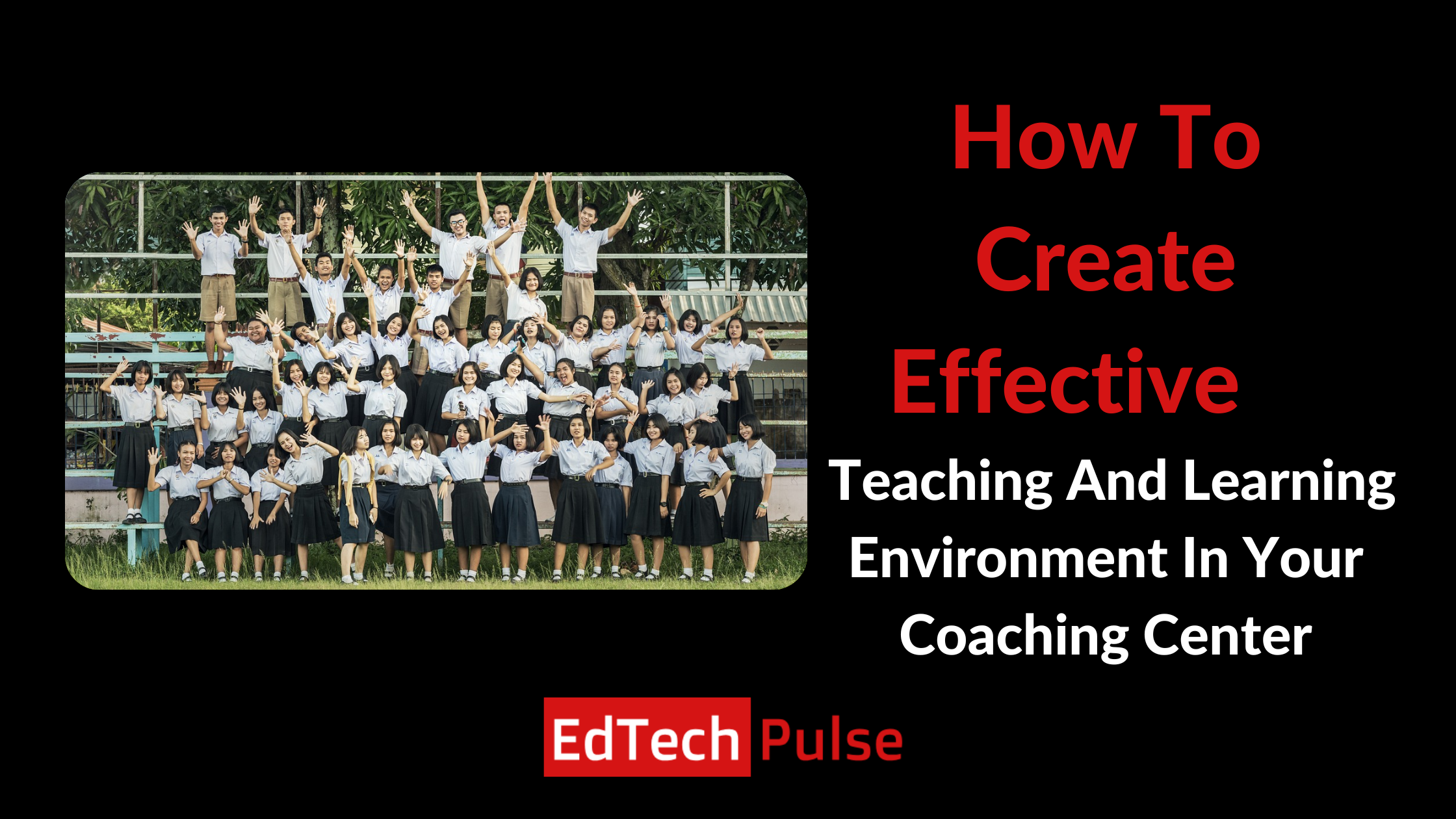How To Create Effective Teaching And Learning Environment In Your Coaching Center
What does effective teaching and learning mean today? Guidelines are no longer given while allowing creative freedom in teaching and learning.
It is critical to take a forward-thinking approach to prepare students for rapidly changing technology and social contexts outside the classroom. The days of lecturing from a podium while students memorized the text on the blackboard are long gone.
As digitalization has become more pervasive in our lives and workplaces, organizations have adopted various methods for conducting business and providing services. Within this environment, similar transformations have been implemented in the education industry, greatly reconstructing the pandemic-affected industry.
New and developing technologies encourage a rethinking of learning and act as catalysts for change and creativity. Students must be involved in order to create a successful and productive learning environment. And there are numerous ways for teachers to improve the learning environment in their coaching centers. Let’s see a few of them.
Strategies for Effective Teaching and Learning
Here are some ideas for creating the ideal environment in your coaching center classroom:
-
Promote Questions than Answers
The method is more important than the outcome.
In a classroom, questions take precedence over answers. As a result, students should make as many genuine inquiries as possible. It should be more important to ask questions than to know the answers. In college, however, the opposite is usually true. It is more important to have correct answers than to formulate original queries. This has to stop right now! Allow students to think critically and solve problems by encouraging them to do so.
-
Greet Students at the Gate Every Day
As each student walks through the door of your coaching facility, greet them. Tell the students that you expect them to shake your hand, greet you verbally, and give you a high five, fist bump, or handshake, depending on their age. As a result, every child will have interacted positively with at least one person that day.
It also conveys to children your concern for them as individuals. If a student was disruptive or recalcitrant the previous day, you have the opportunity to check in, explain your "every day is a clean slate" mindset, and express hope for the class ("Let's have a fantastic day today").
-
Use Team-Building Exercises and Games
It is critical to establish trusting relationships with students. It is also vital that they form positive relationships with one another. One of the most effective strategies to eradicate cliques in the classroom and foster a sense of belonging in shy or new students is to include them in cooperative learning frameworks and non-competitive activities.
There are thousands of grade-appropriate options on hundreds of websites and in books. An advantage of incorporating play into the classroom is that it gives students a compelling reason to attend your coaching center.
-
Avoid Passing Judgment
When students feel judged, categorized, and labeled, they distrust the person thinking of them. It can be challenging to remain objective after making every effort to push a student when she sits there without completing any assignments. Understandably, we might label these students as slackers.
Furthermore, a student who regularly provokes and threatens their classmates is quickly labeled a bully. However, identifying and condemning students is not merely a ploy to avoid our responsibility to educate them. It completely ignores the source of the problem. Instead of passing judgment on students, be curious about them.
Inquire as to why. From where does this fear or hostility stem? Once the root cause of the behavior is identified, it can be addressed immediately, saving you the time and effort required to coax, force, and punish the students.
-
Maintain a Personalized Approach to Teaching
Even with a wide range of tools, meeting every student's learning needs may be challenging. Students must actively participate in class discussions, but teachers must also find ways to distinguish their instruction from that of their colleagues.
When assessing a student's personal growth, a teacher must consider their interest, the rate at which they learn a subject, and their level of material preparedness. These characteristics differ between students. Furthermore, teachers are unable to identify these characteristics based on test results. Personalization is an ongoing process that a teacher must go through to understand the flexibility and change the pace and technique of instruction.
-
Creating a Positive Atmosphere
Students might develop healthy work habits and internal motivation in a positive environment. Building positive relationships with teachers and students may serve as an icebreaker at first. Recognize students who work extremely hard even if they do not demonstrate mastery.
Praise for students' perseverance can go a long way toward assisting their development and application of problem-solving abilities.
Celebrate even the most minor successes for children who occasionally find it challenging to participate in class. Praise for a job well done can go a long way toward helping children and building rapport. As a result, it increases the likelihood that they will repeat the behavior.
Conclusion
The coaching center requires teachers' and students' involvement and adaptable teaching methods. Effective teaching and learning are possible when these three elements are in sync.
So it's time to rethink education and make the necessary changes to teaching and learning to achieve better results. Hopefully, the advice provided will help you with that!
